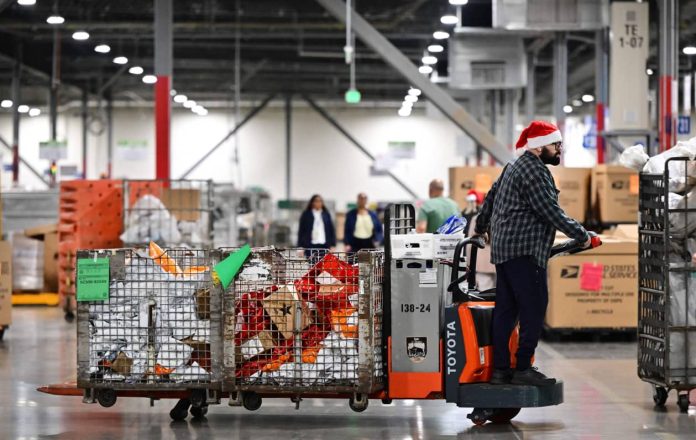US job growth slowed in December and the unemployment rate remained unchanged at 4.2 per cent, confirming the Federal Reserve’s cautious approach to cutting interest rates this year, Reuters reports.
The Labour Department’s employment report, closely watched on Friday, will probably not be overshadowed by the weather and strike distortions that dominated October and November.
The labour market will finish the year on solid footing, although there are growing fears that President-elect Donald Trump’s promises to impose or significantly raise tariffs on imports and deport millions of illegal immigrants could undermine momentum.
Those concerns were evident in the minutes of the US central bank’s December 17-18 policy meeting released on Wednesday, in which “most participants noted that … Committee may take a cautious approach in considering” further cuts. Sevin Yeltekin, a macroeconomist and dean of Simon Business School at the University of Rochester, said:
“The labor market is not as tight as it was coming out of the pandemic, but it’s still strong by any historical measure. If we can avoid a large increase in tariffs and immigration policies that encumber companies that rely on both skilled and seasonal talent, businesses are going to continue to create jobs.”
Nonfarm jobs probably increased by 160,000 last month after rising 227,000 in November, a payback for severe constraints caused by hurricanes and strikes, a Reuters poll of economists showed. Estimates ranged from 120,000 to 200,000 jobs.
Excluding revisions to the October and November data, that means the economy added 2.144 million jobs in the final year of President Joe Biden’s term, equivalent to 179,000 job openings a month. In 2023, about 3 million jobs were created.
The resilience of the labour market, largely reflecting historically low layoffs, is boosting the economy by supporting consumer spending through wage growth. Average hourly earnings are projected to rise 0.3% after rising 0.4% in November. Annual wage growth in December will be unchanged at 4.0%.
Hiring has slowed considerably following significant central bank rate hikes in 2022 and 2023. The economy is growing well above the 1.8% rate that Fed officials consider a non-inflationary growth rate.
